Prompt: Every Moment Is a Memory of a Previous One

[This poem is a response to the NaPoWriMo (National Poetry Writing Month) prompt.]

[This poem is a response to the NaPoWriMo (National Poetry Writing Month) prompt.]
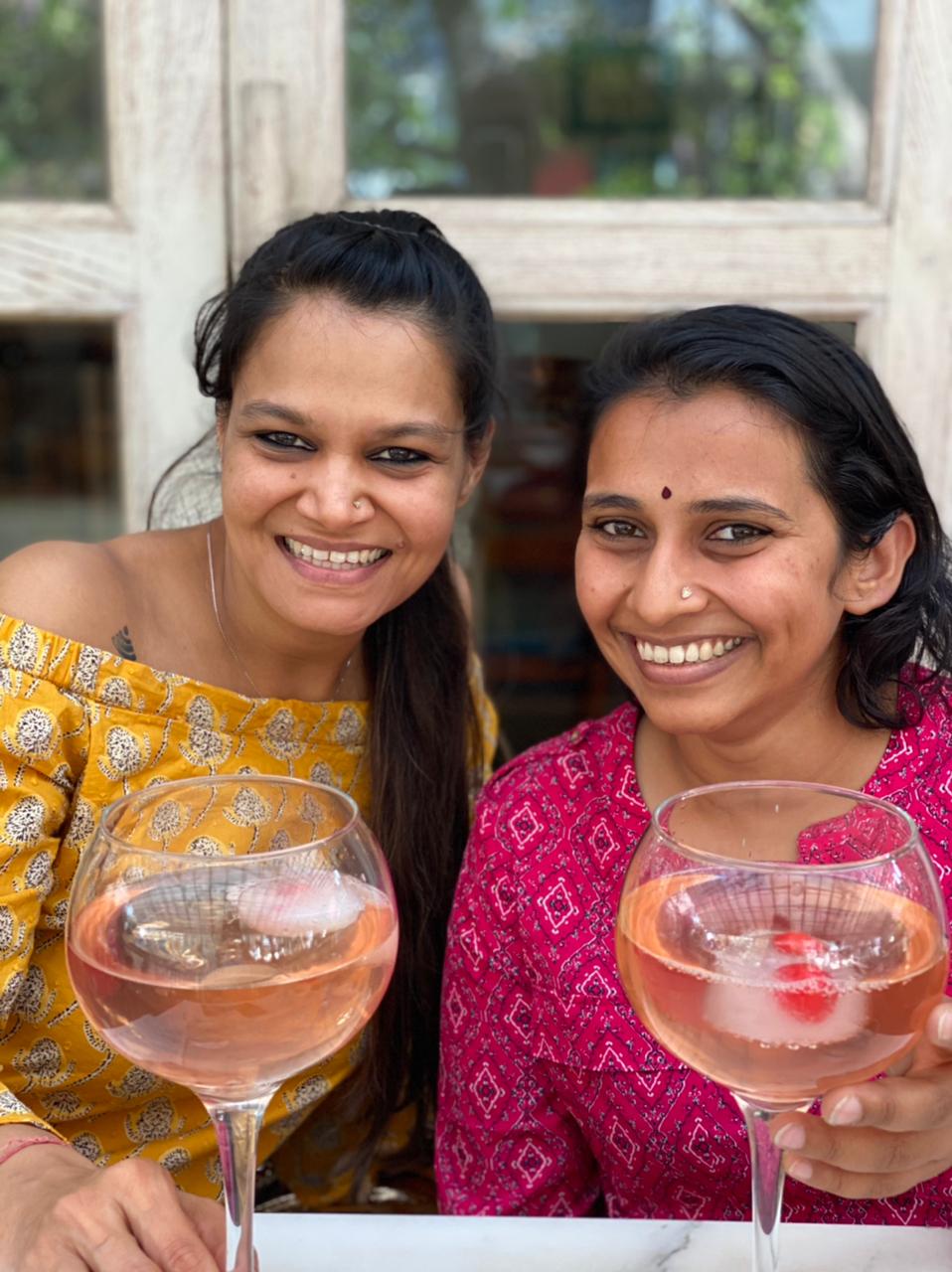
Happy girls are the prettiest.
Bangalore has certainly been unusually cold these days and my days have been super hectic. So hectic in fact, that I didn’t even consider taking a day off for my birthday. But egged on by Medha and enticed by vegan pizza, I made my way to a cute bistro in Indiranagar for a huge meal and hearty laughter.
As we tucked into some fresh, delicious pizza we discussed my upcoming nuptials. I thought with a certain irony about how last year this time I was thinking about a retreat in Rishikesh and this year I’m headed to the same region but for a different kind of life altering experience.
Last year was a test. It tested the range of our creativity, resilience, compassion, strength, our reason, commitment, persistence, our unity, cooperation, our fears and also our ability to wait and watch. For me it was a time to let my practice guide me. How could I make teaching fun for me and for my students? How was it possible to stay dedicated and fresh to the practice day in and day out without burning out. Housekeeping chores are my least favorite and I started to look at cooking as a pause in the day and it helped break the overwhelm that infused those days.
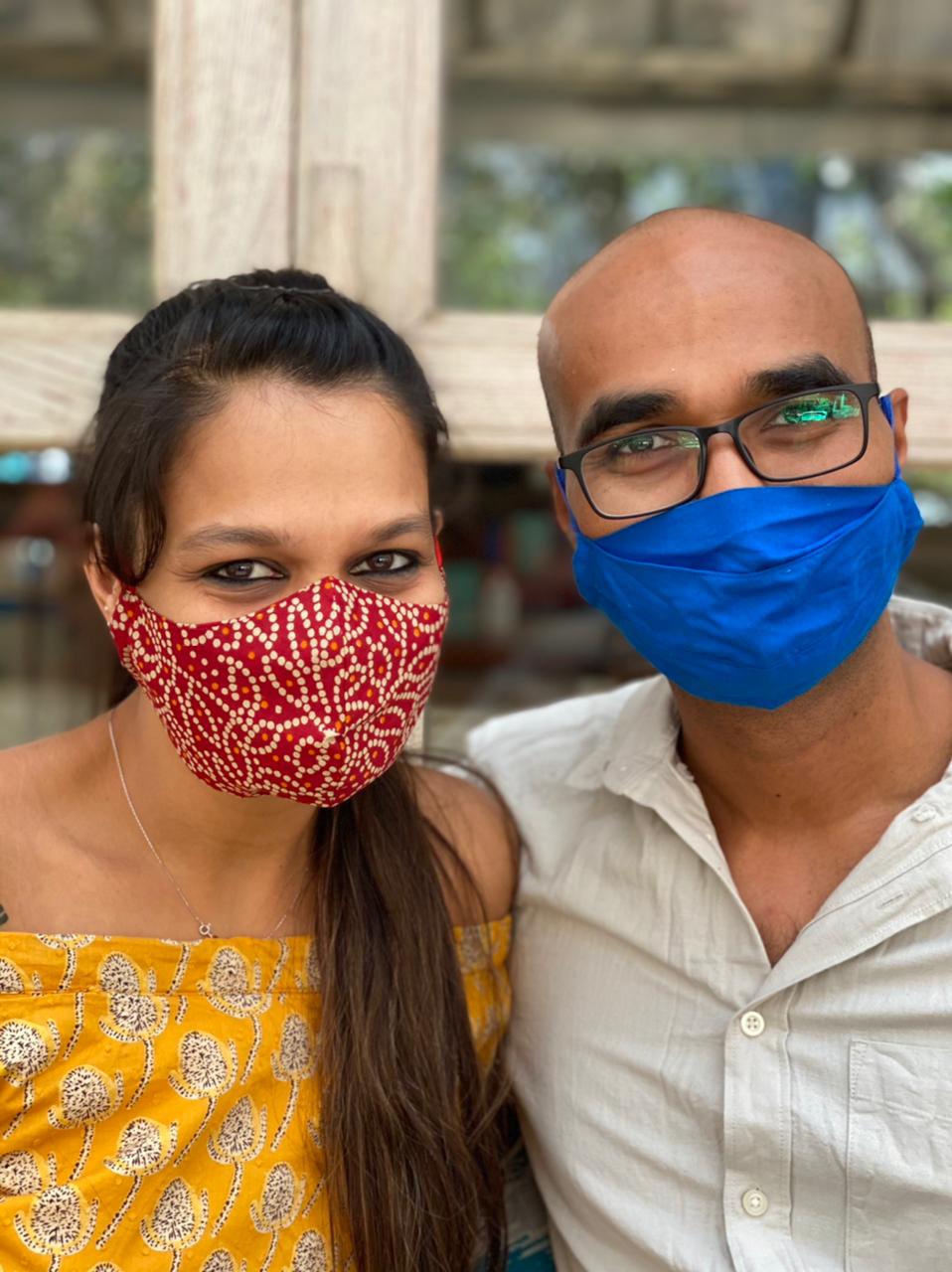
Mask it up!
This year is off to an auspicious start. New ideas and a new house to work on them. New spouse and new adventures to go on. A new outlook and loads of optimism to go along with it.
Below is a video I made to commemorate my 39th birthday. It’s a demo of the first 39 asanas from Light on Yoga.
BLAZE
Social media is constantly trying to tell us that this year has been a terrible one. This message has gotten louder specially now that the year is ending and we’re all making resolutions for the next year. However, if you listen to the softer voices, you’ll realize that there is a parallel dialogue going on; one where this year hasn’t been the worst, but actually one of the best.
I remember last year vivdly for all the travel and good work it brought me. Last year was defined by movement – to travel, to work, for leisure and for the soul. This year was a stark contrast to last year. The world was indoors, the skies cleared up, Netflix reduced it’s video resolution (for a while at least).
It was seemingly the perfect time to take up a new hobby, to read the TBR books, to clean the house and your friends’ list. It’s no surprise most of us got none of this done, this year was unforgiving with its strangeness. I thought I’d go through the pile of books accumulating on my bookshelf (and on most other surfaces in my apartment. I also thought I’d write my magnum opus. The piles continue to grow and the magnum opus is a dream.
But I’m also well rested, bubbling with ideas, still in love with yoga. I have the energy to teach 7 consecultive classes and the enthusiasm to draw rough outlines for my magnum opus. I write 3 journal pages a day and read a chapter every night before I sleep. This year has given me an important pause. Next year I’m ready to blaze on…
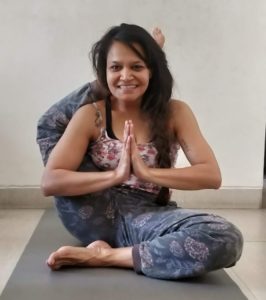
With gratitude…always.
I don’t remember exactly who sent me the Yearly Compass, but sometime around this time last year I got the free downloadable document on WhatsApp and promptly printed it out. On a Saturday morning I sat with a friend in Cubbon Park and we spent a few hours filling the document, coming closer to my true north. I did the same this year, in my living room with a friend. As I started my yearly roundup and reflection, I started wondering what draws me to this activity year after year…
There are many advantages of doing a yearly review, or reflections for the year. Below are some of the benefits I have personally experienced.
Journaling is not fancy and doens’t require too much time. Use this prompt to start your journaling practice:
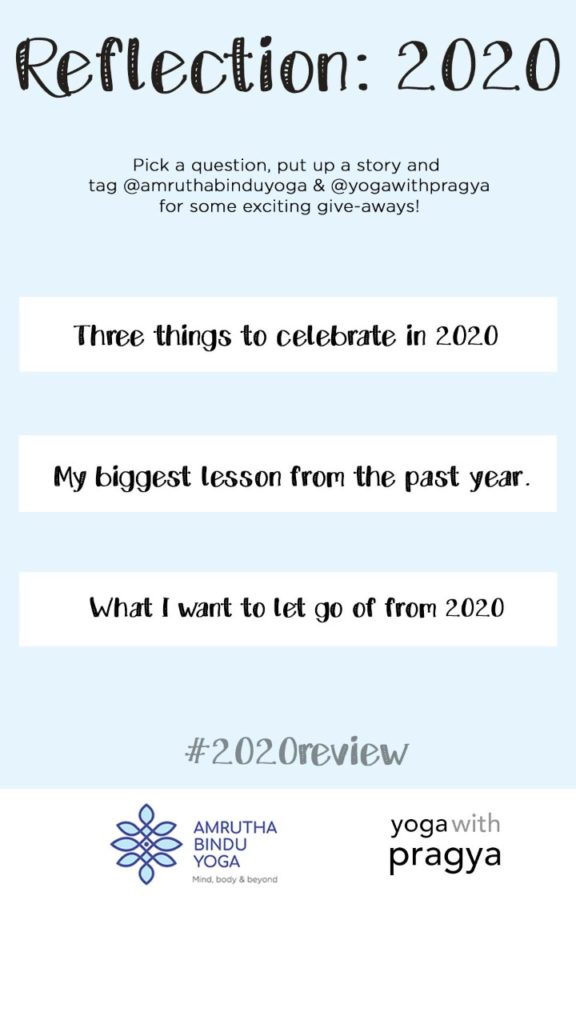
You can download this prompt here.
There’s so much more I could say about how much journaling has helped me and how I consider it to be a mainstay of my spiritual practice. Medha and I have created a yoga calendar for 2021 where journaling is an integral component. Today we’re going live on Instagram to talk about how the Yearly Compass has helped us and how our spiritual practice has been impacted by our journaling. Please join us.
I speak more about my journaling practice in this YouTube video.
The best-laid plans of mice and men often go awry…
This sentence has fluttered in my mind every so often since March this year.
Not even the most ardent pessimist could have conjured the year we’ve had. Back in February, I remember my boyfriend saying, “Something is spreading across the world – a highly contagious virus. They’re saying it’s coming from China.” I had just celebrated my birthday and was looking forward to an Iyengar yoga retreat in the mountains with Usha Devi. Surely the virus wouldn’t come to India, and ofcourse, us yogis would be able to handle a little flu.
Within two days of the ‘something spreading across the world’ conversation, the Indian government started chartering special flights to bring Indian nationals home. Overnight, quarantine facilities were put up in major cities. The pull of the yoga retreat was too strong and I was willing to take the risk of contracting the virus to attend the workshop in Rishikesh. I had been looking forward to it for months.
As it turned out, I ended up not going for the workshop and the next few months were all about online classes interspersed with cooking and cleaning. As the months wore on plans got cancelled. Birthdays, festivals, weddings were cancelled. Court cases were on hold, exams were delayed, many remained separated from their loved ones.
It all got me thinking about the tenuity of our lives. We postpone plans with friends thinking we can catch up ‘some other time’; wait to tell those we love that we love them until the mood or the time is ‘just right’; plan to start yoga/gym until the kids’ exams finish; wait for time to magically present itself to indulge in our hobbies or passions…we wait and wait and for many of us the wait wears us down until there is no joy in the celebrations, the hobbies and our beloved doesn’t feel that zing anymore.
If this year has taught me anything it is that delayed gratification is sometimes denied gratification. The time to act is now. After all the best laid plans of mice and men often go awry…
As I wrote this post I was curious to see what my post last year this time was about, and it was such a pleasant walk down memory lane.
This is a post for Corinne’s (from EverydayGyan) prompt titled ‘What 2020 Has Taught Me’. I also enjoyed Geethica’s post for the same prompt.
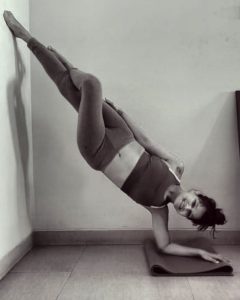
All in all, it’s been a great year, one which has brought a smile to my face despite the surreal strangeness of it all. Expect more amazing pictures on my blog from now on, specially since I now have my own personal photographer handy :).
A great way to do a roundup of the year is to think back on the year past. And this year certainly forced us to think a bit differently.
Without further ado – the 38 things I’m grateful for are:
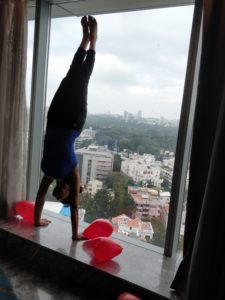
On the 20th floor of the Conrad Hotel, Bengaluru, looking at my city and my life with a new perspective.
I’m linking this blog to Corrine’s Gratitude list and also to Sunita’s Gratitude List.

I read the book over my Diwali break.
I recently finished reading ‘Practice and All Is Coming’ by Matthew Remski and was reeling for hours after reading it. I first came across Matthew Remski a couple of years ago when I read this article about the sexual abuse that was going on in the Ashtanga yoga world. Matthew is a yoga and ayurveda teacher living in Toronto. This book was part of the the reading list recommended in an online yoga course I recently attended about the history of women in yoga.
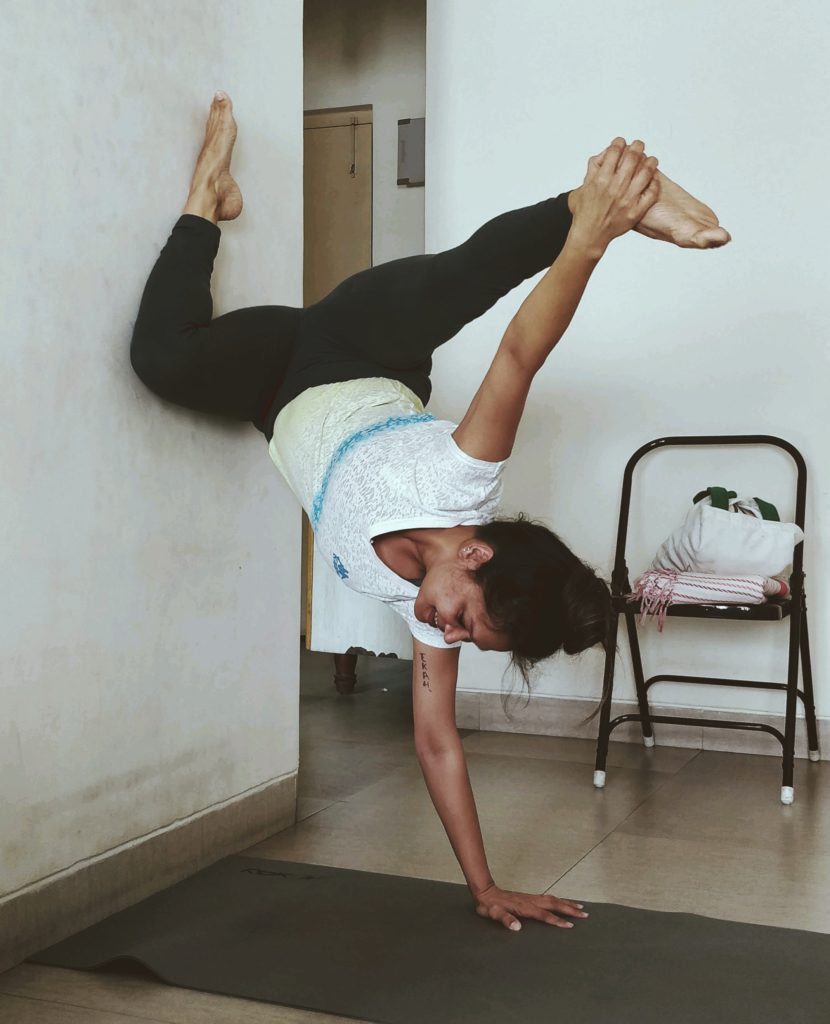
Practicing new stuff I’ve learned during the pandemic.
As I write this I’m in Delhi for Diwali celebrations. I’ve taken a week off from teaching. Markets are a buzz, there are Diwali parties happening, many aren’t wearing any masks. Europe is getting ready for the second lockdown. We read about promises of vaccines, but nothing concrete. Before travelling to Delhi I decided to get the Covid Antibody test done, and found that I’m positive for the antibodies. I’ve been exposed to this virus, but thankfully, never noticed. What’s more, I’m immune to it for some time.
This raises a larger, more ethical question for yoga teachers. When is it a good idea to go back to in-person teaching again? One healthy asymptomatic teacher can pass on the virus to a multitude of vulnerable students.
I’ve been teaching students online for many years now, but this pandemic made that the norm. For those of us who’ve been able to adopt this ‘new normal’, it’s been gratifying in so many ways.
Thanks to the pandemic, I’ve been able to focus more on the art and craft of yoga and that’s why classes have become more engaging and fun. This may just be how I teach going forward.
A few weeks ago I wrote about what I love about online yoga in this blog.
Recordings of my online classes are now up on my YouTube channel. To get a glimpse of these classes click here.
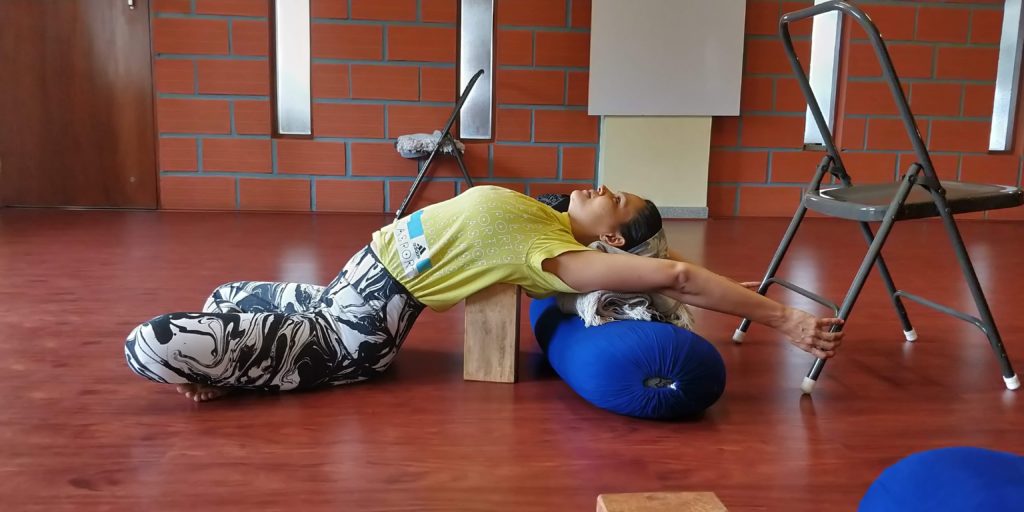
Props galore at an informal practice session at Amrutha Bindu Yoga.
After watching my yoga class recordings on YouTube, many have reached out to me about yoga props. Whether they are required, what kind, which ones should one get? Most of my students did not have props before they joined my classes, in fact, most of them bought props once our classes went online. I guess most of them saw the usefulness of buying props and have seen a noticeable improvement in their practice. I’ve built my collection of props over the years and sourced them from many different places. My students and I have also been trying different props and brands for years and now know what works and what is likely not to work.
This is the prop we use the most, no wonder so many people ask me about it. I use several mats. The oldest and dearest one is by Reebok and I’ve had it forever, so I think it’s out of production. In addition to this I use a cloth mats. I have one from my teacher training days at SVYASA, and another beautiful mat from Deivee. The yoga mat I would personally recommend is this one from Decathlon. It sells out fast and I personally know many people who use and love it. Plus Decathlon always seems to have them in stock.
Blocks/bricks are very versatile, and come in many varieties. I started out with foam blocks from Decathlon, and then eventually expanded my collection to include wooden blocks. I recommend getting blocks in different sizes because there are so many creative ways you can use them. I know many people who use these cork blocks and are very happy with them. You can also check out SVECH for some more cork blocks.
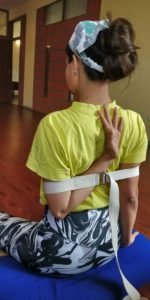
Use a belt to improve Gomukhasana.
Many years ago I told a student that the one prop I would recommend always keeping with you (including when you travel), is the yoga belt. It can help you lengthen, twist, bind, bend forward, bend back…and much more. To ensure your skin doesn’t chaff, your yoga belt should be made of cotton. Another thing to ensure is that the buckles are strong to hold the belt securely in place.
I recommend the yoga belt from MeFree.
Everyone wants the chair and it’s the most difficult prop to come find! The chair can be used in almost every yoga pose. When students first start practice with me, I tell them to use any chair which is stable, has a straight back and no armrests. But eventually you should get the metal chairs. There are certain characteristics of the chair that make them apt for yogasanas – they have legs that you can hold for pinchamayurasanas, you can invert yourself safely in halasana and sarvangasana, you can even use two chairs and do a safe headstand!
Amazon doesn’t have enough variety when it comes to yoga chairs, and it’s always tricky to find a good yoga chair. I found this one by the Friends of Meditation, and one of my students actually uses it. I would suggest this yoga chair by MeFree too, since some of my students have bought their products and are very happy with them.
You can explore more yoga props at SVECH and MeFree
When the lock down started many of my students wanted to buy props. But they were either sold out or companies weren’t delivering. I contacted Mr. Raju here in Bangalore and he was kind enough to supply the props to us. You can contact him on +91 9242286651. I believe he ships to different parts of India too.
If you have any more questions about props, do reach out to me.
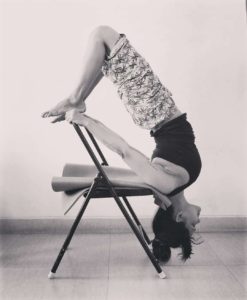
In the last two weeks I’ve had two requests for a restorative class. Seems like an interest in restorative asanas is building up. In view of the times we are living in, I’m not entirely surprised by the request. However, I do feel that the requests were fueled more by the idea that restorative postures are for when you’re unable to do your regular workout, instead of a useful addition to the routine.
It’s a common mistake to equate ‘restorative’ yoga with ‘too easy for me’ yoga. Many people consider restorative yoga classes to be ‘slow’, ‘easy’ and ‘for the old and injured’.
It is incorrect to think that a restorative yoga class is an easy yoga class that is somehow less than a vigorous sweat sesh.
Restorative asanas ‘restore’ your body. Restore it’s energy, vitality and good health. Classes are slower, with longer holds for asanas. Students are encouraged to use props and to always rest the forehead. When you rest the forehead, your nervous system immediately relaxes. In fact, I’ve taken my students through an entire class designed to show the difference between supported and unsupported asanas. Watch it here.
The asanas in a restorative class are a subset of the ones in your regular yoga class. But these are asanas focused more on forward bending and gentle twists and backbends (all with the support of props). Below are examples of a few asanas that you may encounter in a restorative class.
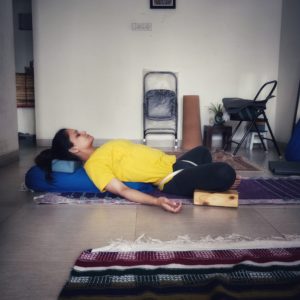
Supta Badhakonasana. I love beginning a restorative class with this posture.
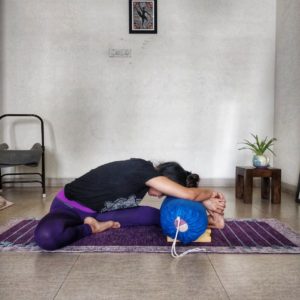
A restful janu sirsasana. Restorative asanas focus on relaxing the mind, by resting the head.
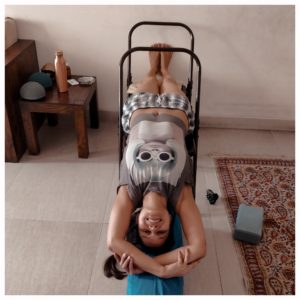
Dwi pada viparita dandasana. This posture is very intense, but this variation can be done even while you’re menstruating (as I was when this picture was taken).
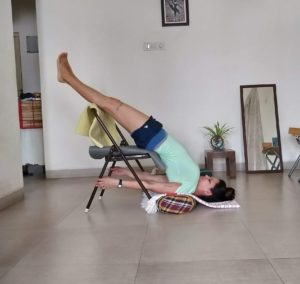
A supported sarvangasana – a posture that should be done daily, but is not accessible to all. The props make it easier and more restful.
What’s interesting is that though a restorative class is slower than other forms of yoga, it doesn’t mean that a flexible and bendy practitioner who is ‘good’ at yoga will be ‘good’ at restorative yoga too. In fact, I’ve seen very flexible and seemingly energetic students find it difficult to ‘rest’ and ‘do nothing’. After all, in such a busy and complicated life, stillness is elusive and to sit and simmer with it all is more elusive still.
Have you ever practiced restorative asanas? Do you find value in adding an element of restorative yoga to your existing yoga/fitness routine?